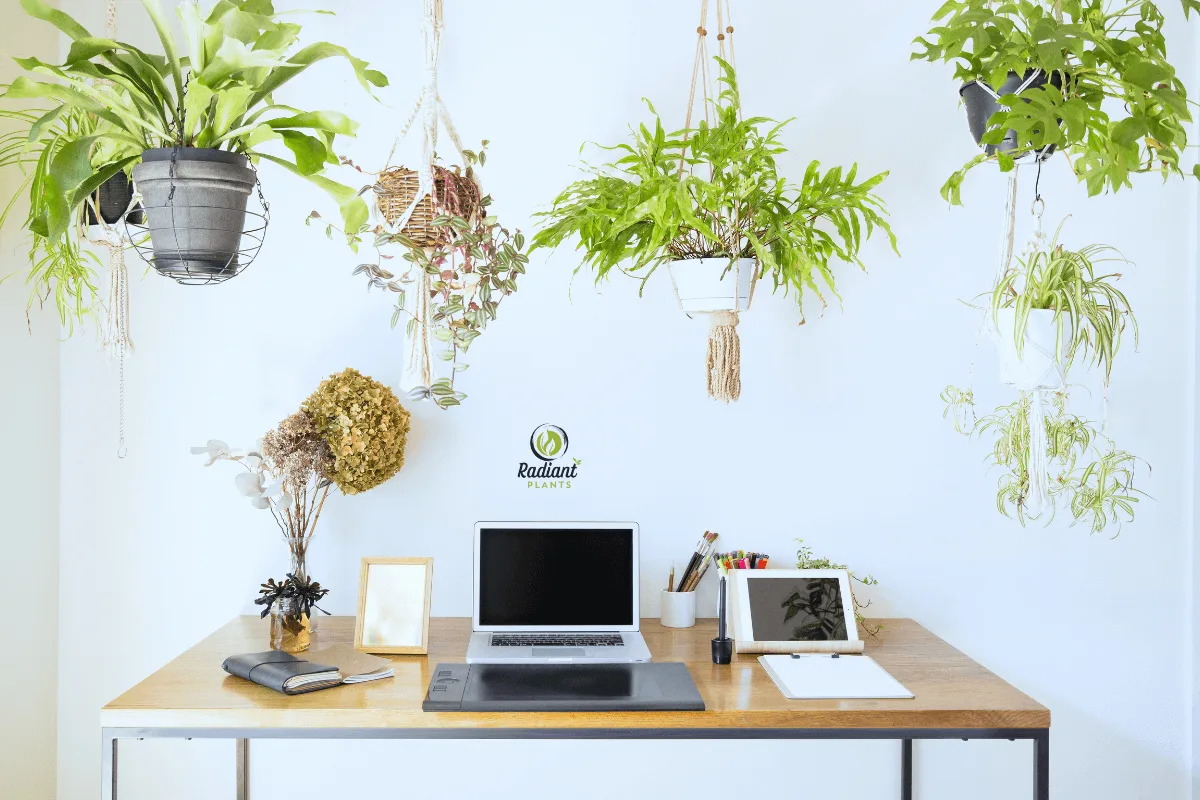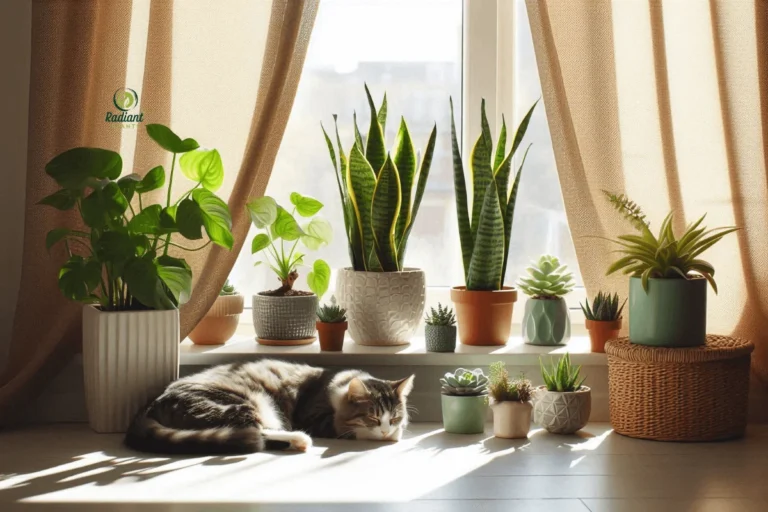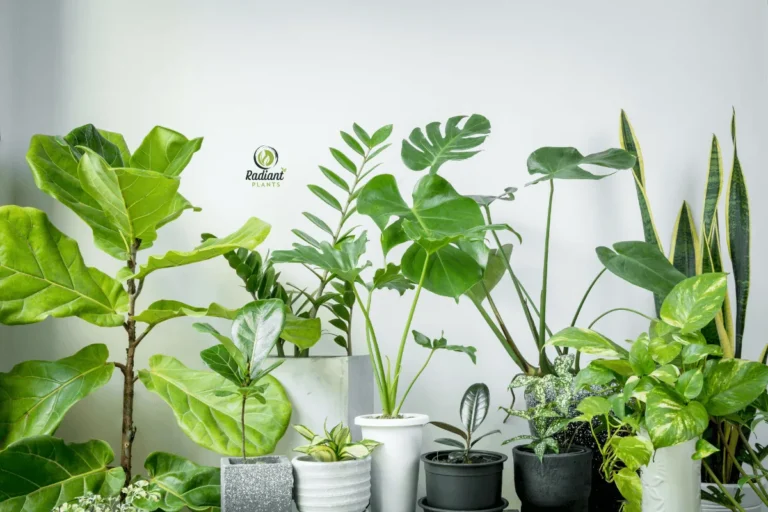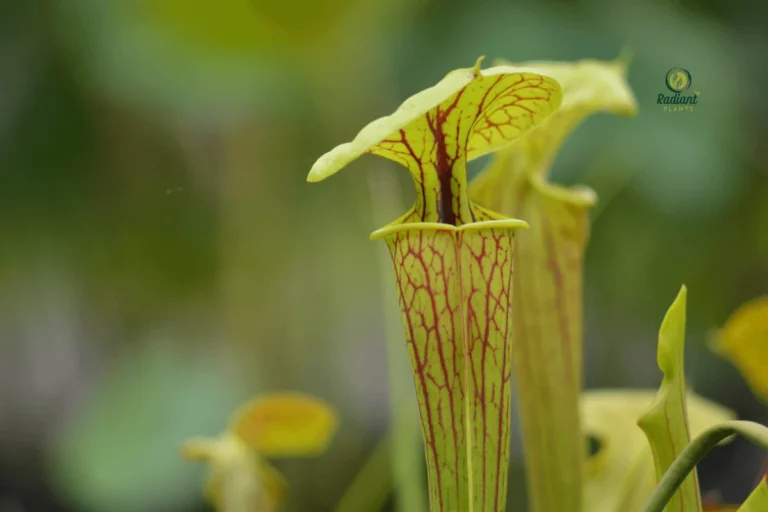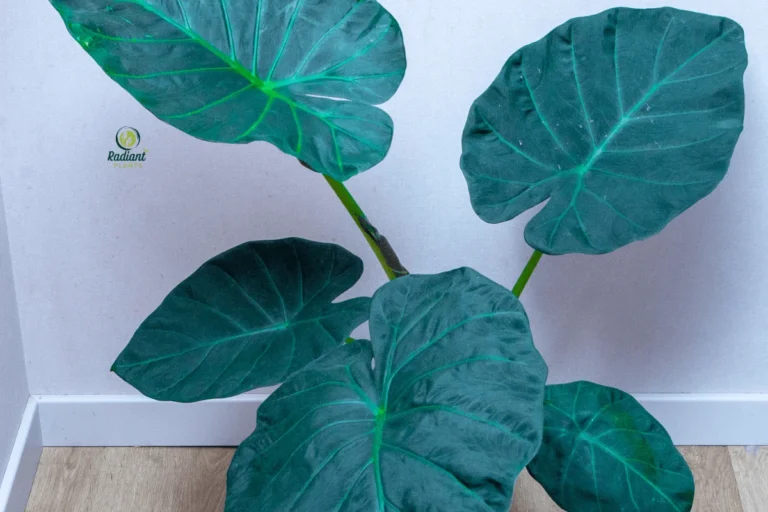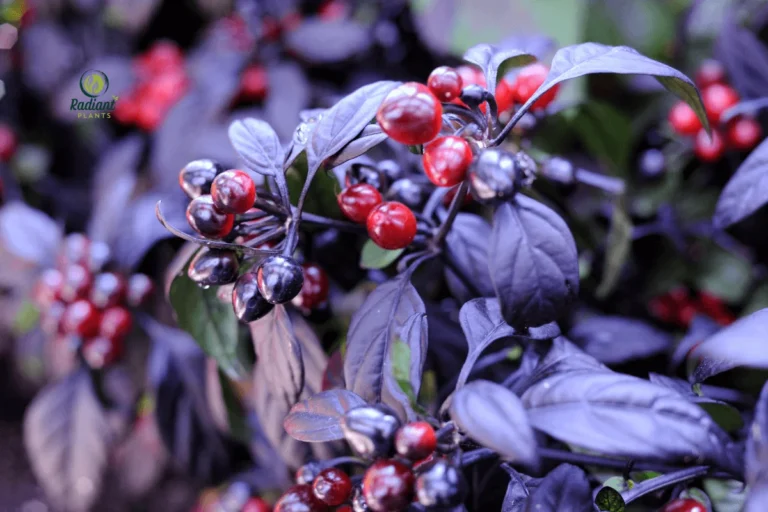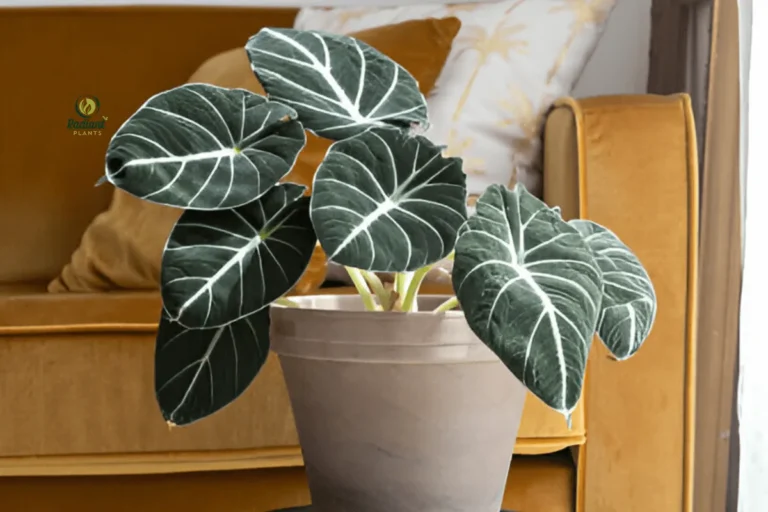Indoor Hanging Plants: 12 Types You’ll Fall in Love With
Indoor hanging plants are a beautiful and space-saving way to bring the beauty of nature indoors. Whether you’re decorating a cozy apartment or adding greenery to a sunny corner, these plants can brighten your home while improving air quality and mood.
From trailing vines like pothos to charming pearls and lush ferns, indoor hanging plants come in a wide variety of shapes, sizes, and care needs. Many are beginner-friendly, thrive in low light, and require minimal maintenance—making them ideal for busy plant lovers or first-time growers.
In this guide, you’ll discover 12 stunning indoor hanging plants that are easy to love and even easier to care for. Let’s find the perfect one for your space.
Table of Contents
Table of Contents
Why Indoor Hanging Plants Are a Must-Have
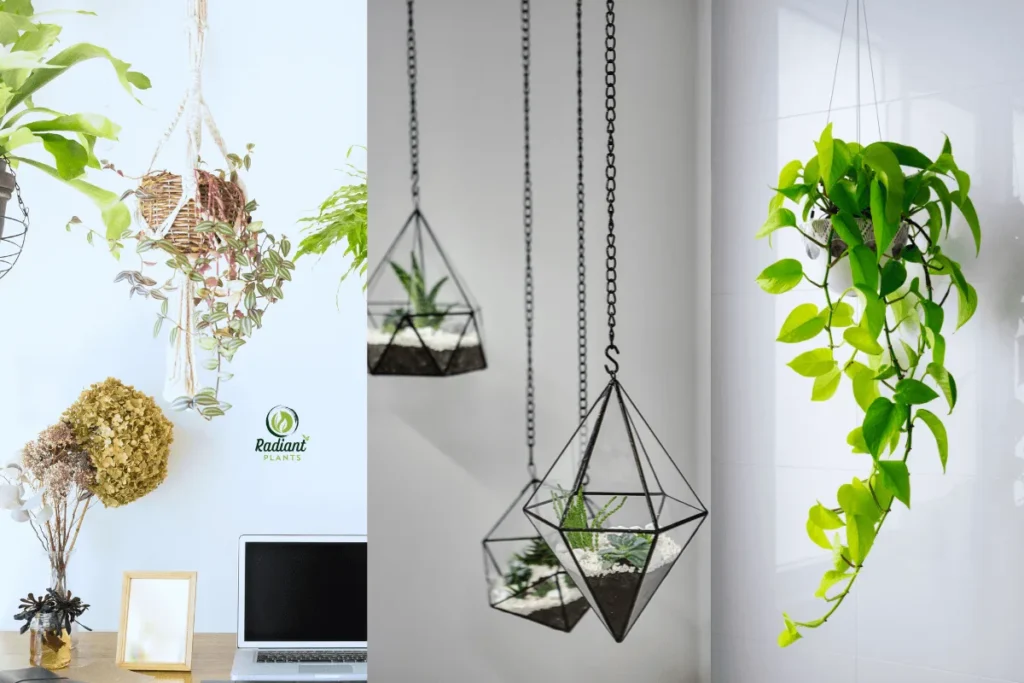
Looking to green up your space without crowding your shelves or floor? Indoor hanging plants are the perfect solution. These trailing houseplants add natural beauty, purify your air, and make use of vertical space—ideal for small homes or renters with limited square footage.
Space-Saving Style for Small Homes
If you’re short on space, indoor hanging plants offer a stylish, low-footprint solution. Instead of taking up tables, shelves, or counters, these plants hang gracefully from ceilings, beams, or wall hooks. They turn unused vertical space into a living, breathing design element.
Benefits for Small Spaces:
- Keep surfaces clutter-free
- Add height and movement to your décor
- Perfect for studio apartments, bathrooms, and cozy corners
- Create “green ceilings” with layered displays
Whether it’s a single cascading pothos or a full gallery of hanging greenery, these plants visually expand small rooms without sacrificing square footage.
Health and Air-Purifying Benefits
Beyond their visual appeal, indoor hanging plants offer powerful wellness perks. Many popular varieties like spider plant, Boston fern, and English ivy are known for improving air quality by absorbing toxins and increasing humidity.
Why it matters:
- Improved indoor air = fewer allergens and pollutants
- Increased humidity can soothe dry skin and respiratory issues
- Plants have been linked to reduced stress and enhanced focus
Research from NASA’s Clean Air Study and various wellness sources confirms the calming and air-purifying effects of keeping low-light indoor plants indoors—especially helpful in dry or poorly ventilated areas.
Versatility in Display Locations
One of the greatest advantages of indoor hanging plants is their flexibility. These plants adapt to nearly any room with the right light conditions and container setup. Whether you want to style your space or fill a tricky corner, there’s a perfect placement for every plant.
Best Places to Hang Plants:
A string of Hearts, Peperomia | Ideal Plants | Why It Works |
|---|---|---|
Kitchen | Spider plant, Pothos | Adds freshness and absorbs odors |
Bathroom | Ferns, Ivy | Thrive in humidity and low light |
Living Room | Hoya, Philodendron | Makes a design statement |
Bedroom | String of Hearts, Peperomia | Soothing, compact, low-maintenance |
Office | English Ivy, ZZ plant | Reduces stress and purifies air |
🌿 Tip: Use suction hooks, ceiling mounts, or hanging rods to easily install greenery without damaging walls—perfect for renters.
💚 Quick Benefits of Indoor Hanging Plants
- ✅ Free up floor and shelf space
- ✅ Boost indoor air quality
- ✅ Add vertical interest to any room
- ✅ Low-maintenance, beginner-friendly options available
- ✅ Great for small or awkward spaces
- ✅ Enhance mood and productivity
From functional air purification to stylish design boosts, indoor hanging plants deliver more than meets the eye. They’re one of the easiest and most versatile ways to bring nature into any home—no matter how small or modern your space might be.
What to Know Before You Buy
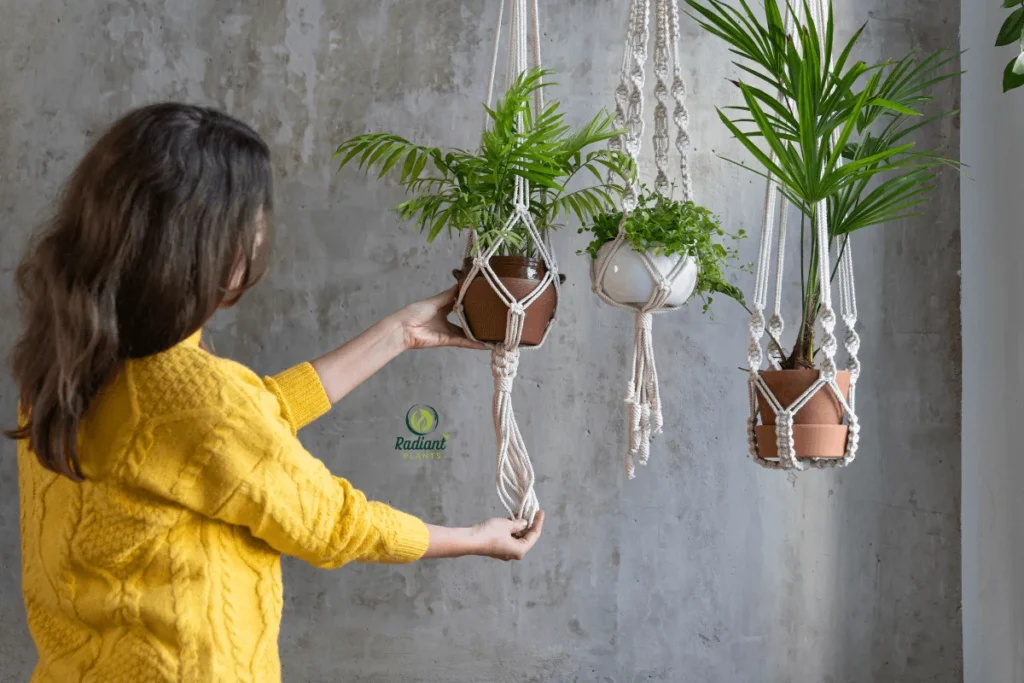
Before choosing indoor hanging plants for your home, it’s important to consider light, watering habits, and pet safety. Each plant has its own needs, and understanding them helps ensure long-lasting, healthy greenery indoors.
Whether you’re decorating with trailing houseplants or vibrant ferns, the right match for your space starts with knowing these basics.
Light Requirements (Low-light, Bright Indirect)
Light is the most important factor when selecting indoor hanging plants. While many varieties thrive in bright, indirect light, some are surprisingly tolerant of darker spots—perfect for bathrooms or corners away from windows.
🌤 Types of Light & Best Plants:
- Bright Indirect Light: Best for string of pearls, hoya, philodendron
- Medium Light: Ideal for pothos, spider plant, burro’s tail
- Low-Light Conditions: Try ZZ plant, English ivy, Boston fern
🪟 Tip: South- or east-facing windows typically offer the best natural light. If your space is dim, consider rotating your low-light indoor plants or adding a grow light.
Watering and Drainage Basics
Watering might seem simple, but overwatering is one of the top causes of plant stress. Unlike potted floor plants, indoor hanging plants often dry out faster due to better airflow.
Key Watering Tips:
- Always choose hanging pots with drainage holes
- Water thoroughly, then allow the soil to partially dry out
- Avoid letting roots sit in excess moisture—this causes root rot
- Use a tray or catch basin to avoid a mess
💧 Humidity tip: Bathrooms and kitchens often provide a naturally humid environment—perfect for ferns and ivies.
Safe vs. Toxic for Pets
If you have cats or dogs, choosing indoor hanging plants that are non-toxic is a must. Some beautiful trailing plants, like pothos and philodendron, are toxic if ingested—so keep them high and out of reach or opt for pet-safe alternatives.
Pet-Safe Plant Tips:
- 🐾 Spider plant and Boston fern are excellent non-toxic choices
- ❌ Avoid pothos, philodendron, and string of pearls if your pets nibble
- Consider hanging plants higher up, or in closed rooms
📦 Pro tip: Check the ASPCA Plant Database for pet toxicity before purchasing.
🌿 Comparison Table: Choose the Right Plant for Your Home
Plant Name | Light Needs | Watering Frequency | Pet Safe? | Maintenance Level |
|---|---|---|---|---|
Pothos | Medium–Bright | 1x/week | ❌ | Low |
Spider Plant | Low–Medium | 1–2x/week | ✅ | Very Low |
String of Pearls | Bright Indirect | Every 10 days | ❌ | Medium |
Boston Fern | Low–Medium | 2–3x/week | ✅ | High |
Philodendron | Medium | 1x/week | ❌ | Low |
Hoya | Bright Indirect | Every 7–10 days | ✅ | Low |
English Ivy | Low–Medium | 1–2x/week | ❌ | Medium |
Burro’s Tail | Bright | Every 2 weeks | ❌ | Medium |
By matching your home’s conditions to the right plant, you’ll avoid common care mistakes and enjoy long-lasting, thriving indoor hanging plants. From low-light corners to sunny kitchens, there’s a beautiful green match for every nook in your space.
12 Indoor Hanging Plants You’ll Love
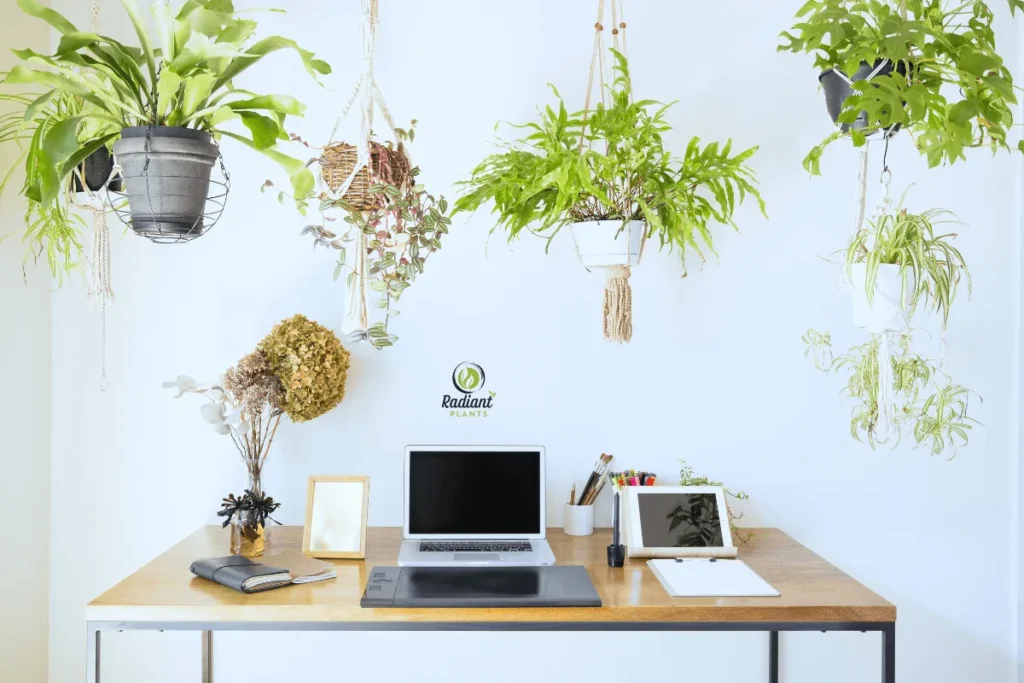
If you’re looking for beautiful, low-maintenance greenery that adds height and texture, these indoor hanging plants are perfect for your home. From lush ferns to trailing succulents, this curated list covers various care levels, styles, and pet safety considerations to help you find the best match.
Pothos (Epipremnum aureum)
- Light & Water Needs: Medium to bright, indirect light; water weekly
- Growth Style & Size: Fast-growing trailing vine, up to 10 ft long
- Pet Safety: ❌ Toxic to pets
- Unique Feature: Nearly indestructible; grows even in water
- Styling Tip: Hang in a high corner and let vines trail down a bookshelf or cabinet
A string of Pearls (Senecio rowleyanus)
- Light & Water Needs: Bright light; water every 2 weeks
- Growth Style & Size: Succulent with bead-like strands, up to 2–3 ft
- Pet Safety: ❌ Toxic to pets
- Unique Feature: Distinctive pearl-like foliage
- Styling Tip: Use a shallow hanging pot and place it near a sunny window for full effect
Boston Fern (Nephrolepis exaltata)
- Light & Water Needs: Indirect light; high humidity and frequent watering
- Growth Style & Size: Bushy and full; fronds grow 2–3 ft long
- Pet Safety: ✅ Safe for pets
- Unique Feature: Excellent air purifier
- Styling Tip: Hang in a bathroom to take advantage of natural humidity
Spider Plant (Chlorophytum comosum)
- Light & Water Needs: Low to medium light; water once or twice a week
- Growth Style & Size: Arching leaves with baby “spiderettes”; moderate size
- Pet Safety: ✅ Safe for pets
- Unique Feature: Produces “pups” for easy propagation
- Styling Tip: Display in a macramé hanger to showcase cascading babies
Philodendron (Heartleaf)
- Light & Water Needs: Medium light; water weekly
- Growth Style & Size: Trailing vines; grows 6+ ft with support
- Pet Safety: ❌ Toxic to pets
- Unique Feature: Heart-shaped glossy leaves
- Styling Tip: Let it trail along shelves or hang from a high corner
English Ivy (Hedera helix)
- Light & Water Needs: Low to medium light; consistent moisture
- Growth Style & Size: Climbing or trailing; fast growth
- Pet Safety: ❌ Toxic to pets
- Unique Feature: Classic and elegant appearance
- Styling Tip: Hang near a window or let trail from a tall plant stand
String of Hearts (Ceropegia woodii)
- Light & Water Needs: Bright, indirect light; allow soil to dry between waterings
- Growth Style & Size: Delicate vines up to 4 ft long
- Pet Safety: ❌ Toxic to pets
- Unique Feature: Heart-shaped leaves with purple tones
- Styling Tip: Use a high-hanging pot to highlight its romantic, cascading strands
Tradescantia (Wandering Dude)
- Light & Water Needs: Bright indirect light; water when the top inch of soil is dry
- Growth Style & Size: Colorful trailing stems, up to 2–3 ft
- Pet Safety: ❌ Toxic to pets
- Unique Feature: Purple and green variegation
- Styling Tip: Brightens dull corners with bold color
Burro’s Tail (Sedum morganianum)
- Light & Water Needs: Bright light; infrequent watering
- Growth Style & Size: Plump, trailing succulent; 2+ ft
- Pet Safety: ❌ Toxic to pets
- Unique Feature: Thick, teardrop-shaped foliage
- Styling Tip: Use a sturdy pot—leaves fall off easily if bumped
Peperomia (Trailing varieties)
- Light & Water Needs: Medium light; allow to dry slightly between waterings
- Growth Style & Size: Compact trailing stems
- Pet Safety: ✅ Safe for pets
- Unique Feature: Waxy, textured leaves
- Styling Tip: Great for small rooms or grouped in clusters
Maidenhair Fern (Adiantum)
- Light & Water Needs: Indirect light; high humidity, frequent misting
- Growth Style & Size: Soft, delicate fronds; 1–2 ft
- Pet Safety: ✅ Safe for pets
- Unique Feature: Elegant, lace-like appearance
- Styling Tip: Hang near a shower or use a humidifier nearby
Hoya (Wax Plant)
- Light & Water Needs: Bright, indirect light; water when dry
- Growth Style & Size: Thick, waxy vines up to 6+ ft
- Pet Safety: ✅ Safe for pets
- Unique Feature: Fragrant star-shaped flowers
- Styling Tip: Use a hoop trellis or let it trail naturally from a basket
📋 Quick Comparison Table
Plant | Light Needs | Watering | Pet Safe? | Easy Care |
|---|---|---|---|---|
Pothos | Medium–Bright | 1x/week | ❌ | ✅ |
String of Pearls | Bright | Every 2 weeks | ❌ | ✅ |
Boston Fern | Low–Medium | 2–3x/week | ✅ | ❌ |
Spider Plant | Low–Medium | 1–2x/week | ✅ | ✅ |
Philodendron | Medium | Weekly | ❌ | ✅ |
English Ivy | Low–Medium | 1–2x/week | ❌ | ✅ |
String of Hearts | Bright | Every 10 days | ❌ | ✅ |
Tradescantia | Bright Indirect | 1–2x/week | ❌ | ✅ |
Burro’s Tail | Bright | Every 2–3 weeks | ❌ | ✅ |
Peperomia | Medium | 1x/week | ✅ | ✅ |
Maidenhair Fern | Indirect, humid | Frequent misting | ✅ | ❌ |
Hoya | Bright Indirect | 1–2x/week | ✅ | ✅ |
With this variety of indoor hanging plants, you’ll find the perfect mix of style, care level, and personality for your home. Whether you’re after drama, softness, or easy care, there’s a plant here for every space and lifestyle.
🌿 all of my hanging plants 🌿 the best plants to give your home a jungle feeling!
Styling & Display Ideas
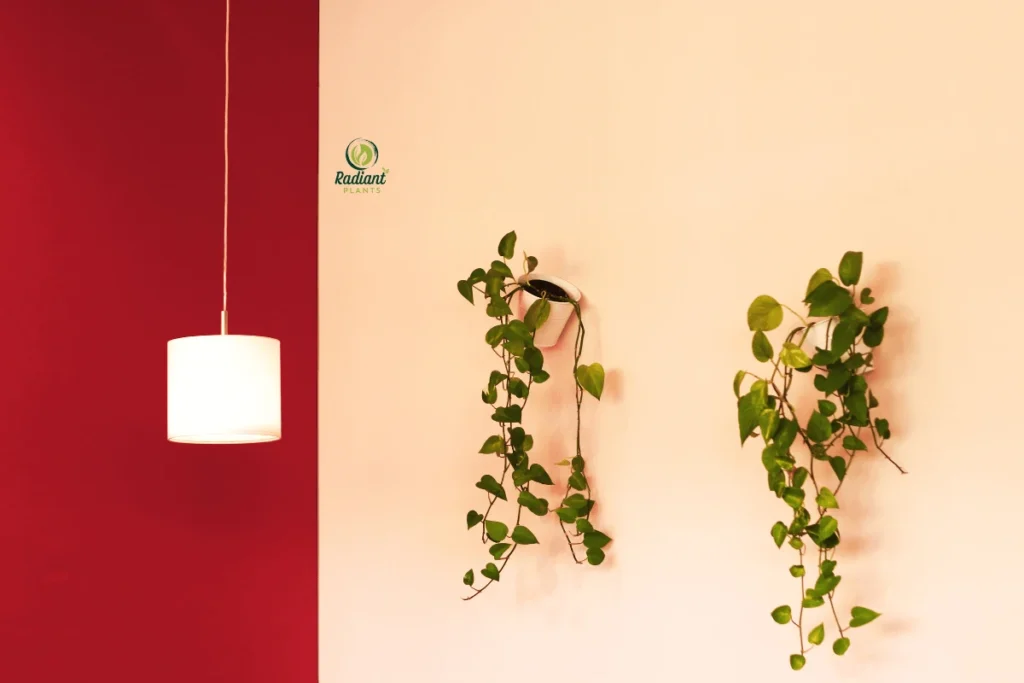
Styling your indoor hanging plants is where function meets creativity. From ceiling-mounted baskets to macramé hangers and grouped arrangements, how you display your greenery can dramatically enhance a room’s mood and design. Whether you’re decorating a sunny kitchen or a low-light bathroom, there’s a stylish way to hang plants in every space.
DIY Macramé & Hanging Planters
Macramé has made a major comeback—and it’s perfect for trailing houseplants. These knotted hangers bring warmth, texture, and a touch of boho charm to any space. Best of all, they’re easy to make or find online.
Popular Hanging Styles:
- Macramé Holders: Soft cotton cords in various designs; great for spider plants and ferns
- Ceramic Hanging Pots: Sleek and modern; ideal for hoya or peperomia
- Woven Baskets: Natural fibers add an earthy, rustic feel
- Wall-Mounted Shelves with Hooks: Combine shelves and hangers for layered displays
- Floating Glass Terrariums: Stylish for small plants or cuttings
🎨 Tip: Mix and match hanger styles to add visual depth while keeping a consistent color palette.
Best Spots by Light Availability
The beauty of indoor hanging plants lies in their adaptability. Whether you’re working with lots of suns or very little, choosing the right spot makes all the difference in plant health and growth.
🌞 Best Locations by Light Type:
Location | Light Level | Best Plants |
|---|---|---|
Near South Window | Bright Indirect | Hoya, String of Pearls, Tradescantia |
East/West Wall | Medium Light | Spider Plant, Pothos, Philodendron |
Bathroom Corner | Low Light + Humid | Boston Fern, English Ivy |
Kitchen Shelf | Mixed Light | Peperomia, Burro’s Tail |
Bedroom Corner | Low Light | ZZ Plant, String of Hearts |
🪟 Tip: If natural light is limited, consider using clip-on grow lights to help low-light indoor plants thrive.
Grouping Tips for Visual Impact
Designing with plants is like curating art. Grouping your hanging greenery in creative ways can elevate the entire look of a room while making your plants easier to care for collectively.
🌿 Grouping Ideas:
- Vary Height and Pot Sizes: Create movement by staggering plant levels
- Mix Trailing and Upright Plants: Combine ferns with cascading vines for balance
- Use Color Contrast: Pair green foliage with pink Tradescantia or purple Wandering Dude
- Triangle Rule: Display plants in triangular formations for visual symmetry
- Vertical Ladder Rack: Hang multiple plants at different heights along a wooden frame
🪴 Design tip: Use odd numbers (3 or 5) when grouping plants—it feels more natural and pleasing to the eye.
📸 5 Stylish Ways to Hang Plants Indoors
- Macramé from Ceiling Hooks – Soft and artistic
- Tension Rod Window Garden – Ideal for herbs or compact vines
- Wall-Mounted Wooden Pegs – Clean and Scandinavian-inspired
- Tiered Hanging Baskets – Great for kitchens and corners
- Floating Shelf with Dangling Vines – Layer pots with trailing houseplants like ivy and pothos
Styling your indoor hanging plants isn’t just about aesthetics—it’s also about helping each plant thrive where it’s happiest. With the right materials, lighting, and layout, your home can feel both lush and thoughtfully designed.
Common Problems and Fixes
Even the healthiest indoor hanging plants can face occasional challenges. From yellowing leaves to pests or rot, knowing what to look for and how to respond will help keep your trailing houseplants thriving in any indoor setting.
Yellowing Leaves
Yellow leaves are one of the most common issues with indoor hanging plants—and they often signal a problem with watering, lighting, or nutrients.
🌿 Causes of Yellowing Leaves:
- Overwatering: Soil stays too wet, and roots begin to suffocate
- Underwatering: Leaves dry out, curl, and eventually yellow
- Poor Lighting: Too much direct sun or not enough light can stress the plant
- Nutrient Deficiency: Especially lack of nitrogen or magnesium
🛠 Fix:
- Check soil moisture before watering
- Ensure proper drainage
- Move the plant to better lighting conditions
- Add a diluted liquid fertilizer once a month
🪴 Tip: Trim yellow leaves to redirect energy to healthy growth.
Root Rot and Overwatering
Root rot is a silent killer for many indoor hanging plants, especially in non-draining containers. It usually starts below the surface, but you’ll notice signs like mushy stems, foul odor, and drooping foliage.
🚨 Warning Signs:
- Leaves yellowing rapidly
- Stems feel soft or soggy
- Soil smells musty or sour
🛠 Fix:
- Remove the plant from its pot and cut away any black, mushy roots
- Repot in fresh, dry soil with better drainage
- Allow the soil to dry before the next watering
💧 Tip: Use pots with drainage holes and water only when the top inch of soil is dry. For low-light indoor plants, reduce watering frequency further.
Pest Prevention
Pests like fungus gnats, spider mites, and mealybugs can appear unexpectedly, especially in warm, humid conditions. These pests often hide under leaves or in the soil of your hanging greenery.
🐛 Common Indoor Plant Pests:
- Fungus Gnats: Small flying insects attracted to moist soil
- Spider Mites: Specks on leaves; often cause stippling or webbing
- Mealybugs: White, cottony clusters near stems and leaf joints
🛠 Fix:
- Remove visible pests with a cotton swab dipped in alcohol
- Spray leaves with neem oil or insecticidal soap
- Let soil dry completely between waterings to deter gnats
- Quarantine new plants before placing them with others
🪴 Tip: Regularly dust your trailing houseplants and inspect leaf undersides to catch pests early.
📌 FAQ Section
How do I stop leaves from turning yellow?
Check for overwatering or lack of light. Adjust your watering schedule and move the plant to a brighter spot if needed. Use a balanced fertilizer monthly.
How often should I water my hanging plants?
It depends on the plant and environment. Most indoor hanging plants prefer watering once every 7–10 days. Always check soil moisture before watering.
What indoor hanging plants are safe for pets?
Pet-safe options include spider plant, Boston fern, hoya, and peperomia. Avoid pothos, philodendron, and a string of pearls if you have curious pets.
Can I hang plants in a bathroom?
Yes! Bathrooms are great for low-light indoor plants that love humidity. Ferns and ivies thrive in moist air and can be hung in corners or on towel racks.
Do indoor hanging plants need fertilizer?
Most do benefit from monthly feeding during the growing season. Use a diluted, all-purpose liquid fertilizer for healthy foliage and growth.
By identifying and solving these common issues with indoor hanging plants early, you’ll maintain a lush, vibrant display year-round. A little observation and routine care go a long way in preventing pests, yellowing, or watering mishaps.
Final Tips for Thriving Hanging Plants
Caring for indoor hanging plants is simple with the right setup and a little routine attention. From lighting to styling, the key to long-term success is understanding your plant’s unique needs—and matching them to the right spot in your home.
Let’s wrap up with a few essential reminders to keep your trailing houseplants healthy and beautiful.
🌿 Top Care Reminders at a Glance
- Choose the Right Plant for Your Space: Consider light availability, humidity, and room function before picking your plant.
- Use Well-Draining Pots: Hanging planters with drainage holes are essential to avoid root rot.
- Water Smart: Check soil before watering. Too much or too little water is a common cause of stress.
- Mind the Light: Most indoor hanging plants love bright, indirect light—but some (like Boston fern or English ivy) thrive in low-light corners too.
- Feed Occasionally: Use a balanced, diluted fertilizer once a month during the growing season.
- Prune and Rotate: Trim dead leaves and rotate your plant every couple of weeks to promote even growth.
💡 Tip: Set reminders on your phone for watering and feeding to build a consistent plant-care habit.
🎨 Styling Recap: Make the Most of Your Greenery
Don’t forget the visual magic that hanging greenery can bring to your space. Styling isn’t just about design—it also improves plant health by placing them in the right light.
Display Smarter with These Tips:
- Mix heights and pot styles to create dimension
- Use macramé or ceiling hooks to free up surfaces
- Place plants in rooms with matching humidity levels (e.g., ferns in bathrooms)
- Combine 3–5 plants in grouped arrangements for impact
- Don’t crowd: Allow airflow between plants to prevent disease
🪴 Design Tip: Match pot colors to your room palette for a cohesive look while letting the foliage be the focal point.
🌱 Re-Evaluate as Seasons Change
Indoor environments shift with the seasons—less light in winter, more dryness from heating or A/C. Reassess your indoor hanging plants’ positioning and watering routine at least every 3–4 months.
Seasonal Adjustments:
Season | Care Change | Styling Tip |
|---|---|---|
Spring | Resume feeding | Add fresh plants to brighten space |
Summer | Increase watering | Use light pots and airy hangers |
Fall | Reduce feeding & water | Shift to warm-toned plant combos |
Winter | Provide supplemental light | Avoid placing near cold drafts |
🪴 The Right Plant in the Right Place
The real secret to success? Matching plant to placement.
- Bright window? Try hoya, string of pearls, or tradescantia
- Dim bathroom? Go with Boston fern or English ivy
- Pet-safe needed? Choose spider plant, peperomia, or hoya
- Low-maintenance? Pothos and philodendron are your go-to picks
Taking time to select a plant based on your space will reduce care stress and increase your plant’s chance of thriving.
🌼 Bring Nature Into Your Home
Ready to refresh your space with life and greenery?
Try one of these indoor hanging plants today to bring nature into your home. With just a few smart care habits and creative styling ideas, you’ll enjoy a healthier, more vibrant indoor environment—whether you’re growing one plant or curating a full hanging garden.
Your next plant companion is just a pot and a hook away. 🌿

